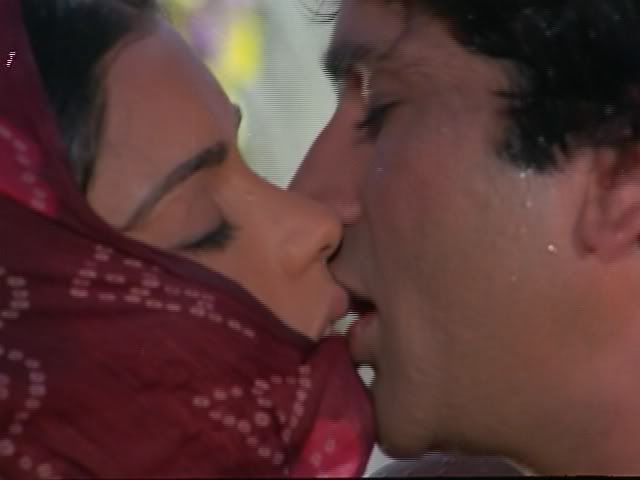 RAJ kAPOOR'S Satyam Shivam Sundaram (meaning, “Truth is God and God is truth" ... ZEENAT AMAN & SHASHI KAPOOR (1978)
RAJ kAPOOR'S Satyam Shivam Sundaram (meaning, “Truth is God and God is truth" ... ZEENAT AMAN & SHASHI KAPOOR (1978)The story is based on the persona of Lata Mangeshkar who then was not pretty in terms of facial beauty but had other unparalleled quality , the divine voice.
Whereas the message was noble Raj Kapoor filmed certain scenes which were supposedly against the ethos of Indian culture. As a result the film became famous for its songs but not otherwise.
The film had to face a stiff battle in getting past the Indian Film Censor Board for some of its risque scenes. The film did average business.
The movie is set in a village where the heroine, Zeenat Aman, lives with her father, and the hero, Shashi Kapoor, comes as an engineer to oversee and build a major dam. The girl Roopa (name meaning beautiful) is tall, very attractive and also god-fearing, she goes to the temple daily and is a very good singer. The hero falls in love with her, and asks her father permission to marry her. However, she is scared of the marriage.
Since she was a child she loved three things. God, music and dancing. Growing up she was happy until, as a young child, she was burned by a pot of oil on one side of her face. This ruined her entire life but she never lost faith.
She is beautiful, but only on one side of the face. The other side had been scarred and disfigured by her childhood injury. She keeps that part of the face hidden by a veil using her sari palloo. She is afraid that he will turn away when he sees her gruesome side of the face.
The hero, on the other hand, suffers from a fear of ugliness (cacophobia), and cringes repulsively when he sees Roopa in the day. However, he meets her at night, and failing to see the disfigured side, falls in love with her.
Eventually he marries her only to discover the truth, at which he disowns her and drives her out of the house. Some time later, a terrible storm ravages the village, leading to a flood in whose swirling waters he overcomes his fear of ugliness and saves Roopa from drowning.
.
.












 Evergreen hero Dev Anand was desperately in love with Zeenat Aman but was heart broken before a 'date' with her when he found Raj Kapoor throwing his arms around her at a party.
Evergreen hero Dev Anand was desperately in love with Zeenat Aman but was heart broken before a 'date' with her when he found Raj Kapoor throwing his arms around her at a party.







